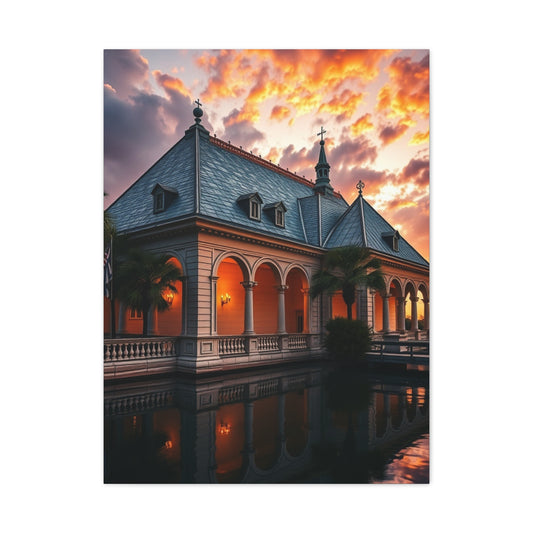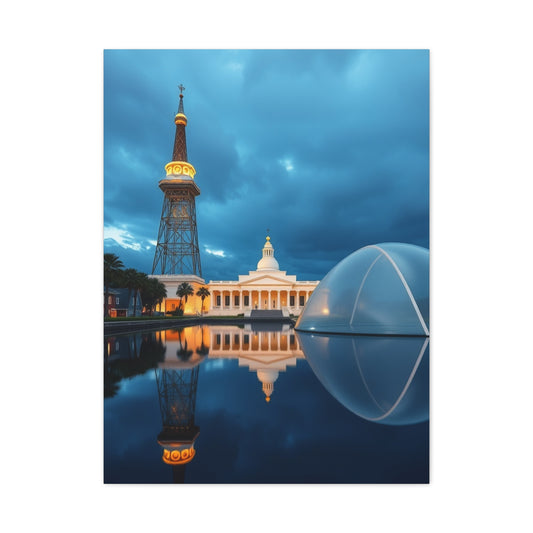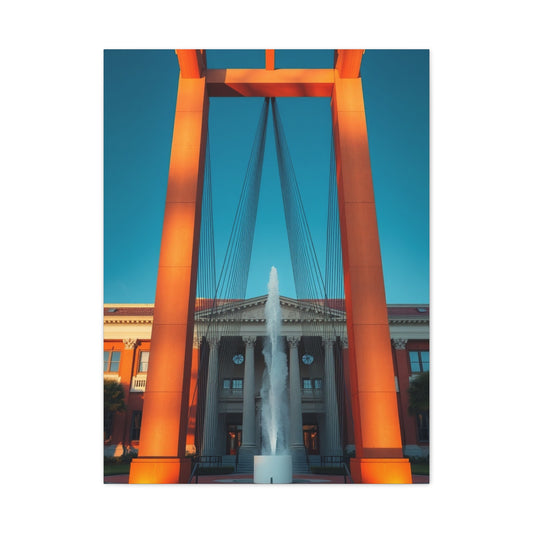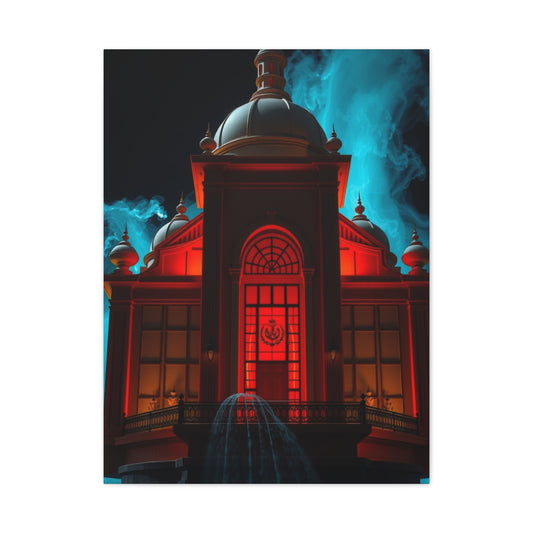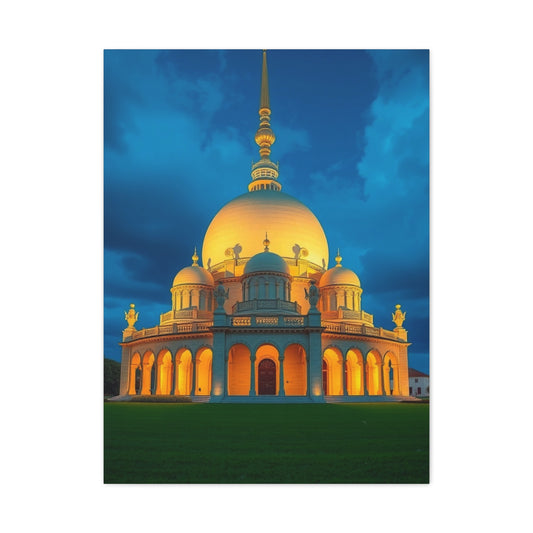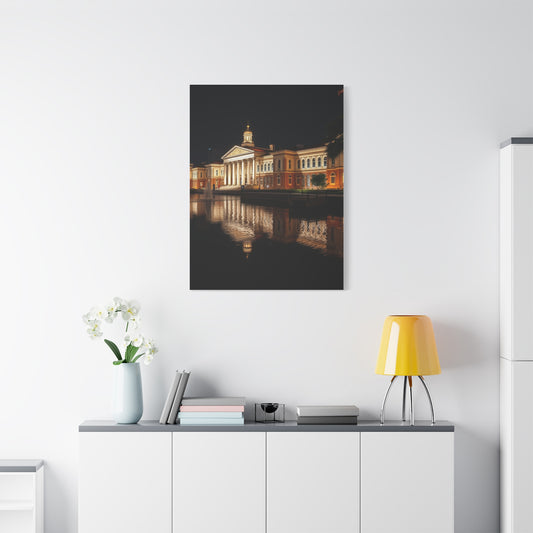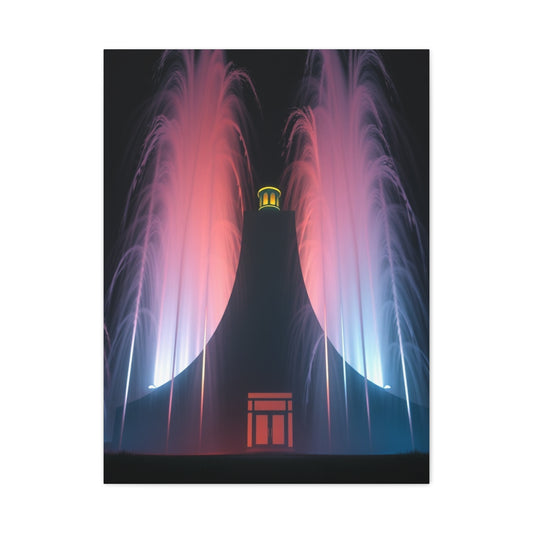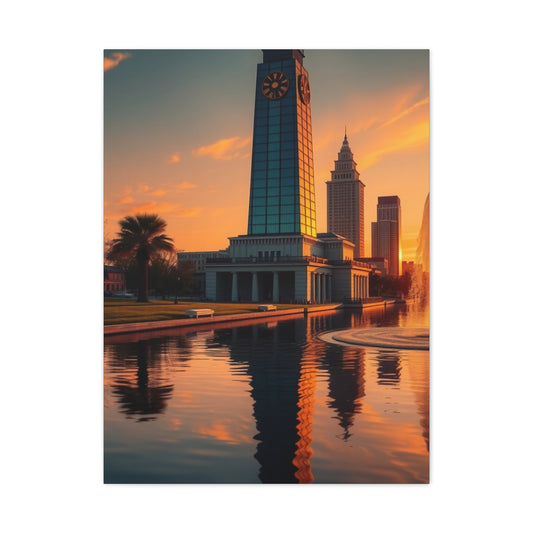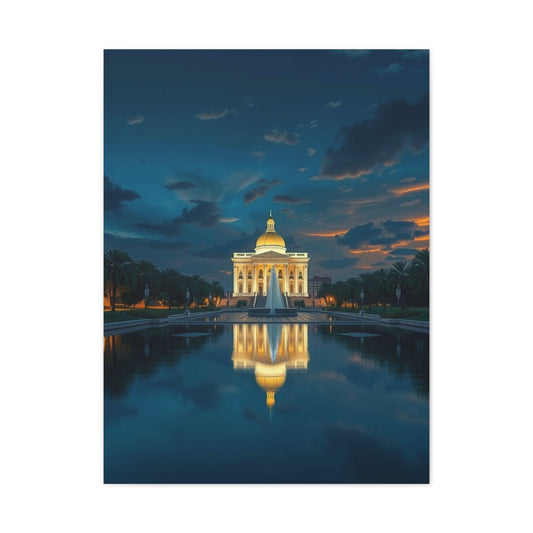Discovering Louisiana’s Spirit Through Fine Art Collection
When people think of Louisiana, images of jazz-filled streets, vibrant festivals, and the aroma of Creole cuisine often come to mind. Yet beyond the music, food, and celebrations lies another profound expression of the state’s character: fine art. Louisiana’s artistic tradition runs deep, reflecting centuries of cultural intermingling, natural beauty, and a spirit of resilience that cannot be contained. Artists across this enchanting region translate the rhythm of the bayou, the architectural marvels of New Orleans, and the soulful faces of its people into striking visual narratives. Fine art in Louisiana is not simply decorative; it is a living archive of stories, emotions, and traditions that evolve with each generation.
The exploration of Louisiana through fine art offers a journey into its essence. From bold canvases drenched in color to delicate ceramics etched with cultural motifs, the artistic heritage of this region paints a portrait as diverse as its landscapes. Fine art here is both timeless and contemporary, capturing moments from the state’s colonial past while also experimenting with modern abstraction and symbolic expression. Whether viewed in a bustling gallery or a quiet home, Louisiana art has the power to transport us into the heart of its culture, offering not only beauty but also meaning, connection, and memory.
In this exploration, we will dive into the historical roots of Louisiana’s fine art tradition, examine the foundational ideas that sustain its creative spirit, uncover the range of styles and categories that define its expression, and finally, highlight how these works find practical application in daily life and cultural preservation. This journey through Louisiana’s artistry will reveal not only its aesthetic brilliance but also its role as a vital expression of community and identity.
Historical Background
The history of fine art in Louisiana is as layered and intricate as the state’s cultural tapestry. Long before European settlers arrived, Indigenous peoples created intricate pottery, beadwork, and symbolic carvings that reflected their spiritual beliefs and intimate connection to the land. These early creations served as both functional objects and sacred expressions, embedding artistry into daily life and ritual.
With the arrival of French and Spanish colonists, a new wave of artistic influence took root. Architectural sketches, religious paintings, and elaborate decorative arts began to shape the visual culture of Louisiana. The Catholic Church played a significant role in commissioning religious art, with depictions of saints and biblical scenes adorning churches and private homes throughout the world. The French love for ornate design merged with Spanish influences, resulting in a unique Creole aesthetic that combined Old World elegance with New World innovation.
During the nineteenth century, Louisiana’s finin tandem withne expanded alongside its economic and social development. The vibrant port city of New Orleans became a hub for artists, attracting European painters, sculptors, and craftsmen. Landscapes capturing the lush swamps, portraits of wealthy Creole families, and detailed depictions of plantation life flourished. Yet art also became a vehicle for social commentary, particularly during times of upheaval. Paintings and drawings documented the struggles of enslaved people and highlighted cultural traditions of African heritage, giving voice to those whose stories were often silenced.
The twentieth century brought even greater diversity to Louisiana’s art. Jazz, blues, and folk traditions influenced visual expression, with bold, rhythmic strokes mirroring musical improvisation. Artists began to experiment with modernist and abstract styles, while folk artists kept traditions alive through handmade crafts, murals, and vibrant street art. The civil rights era added another layer, as painters and sculptors used their work to challenge inequality and celebrate Black identity.
Today, Louisiana’s fine art exists as both a preservation of its history and a beacon for innovation. Contemporary artists merge digital techniques with traditional craftsmanship, creating works that honor heritage while embracing modernity. The historical evolution of Louisiana’s fine art illustrates not just aesthetic shifts but the resilience and adaptability of a community that continues to tell its story through creativity.
Core Concepts and Foundations
At the core of Louisiana’s fine art lies the interplay of culture, environment, and identity. The foundations of this art form rest on a few essential ideas that make it distinct.
One of the most significant concepts is cultural fusion. Louisiana is a mosaic of French, Spanish, African, Caribbean, and Native American influences, and its fine art reflects this blend. Every brushstroke, pattern, or motif carries echoes of different traditions woven into a seamless whole. This syncretism is not just aesthetic; it is an embodiment of Louisiana’s historical journey and social fabric.
Another foundational idea is storytelling. Louisiana artists often use visual narratives to convey tales of ancestry, celebration, struggle, and spirituality. Whether through folk art depicting Mardi Gras parades or modern canvases portraying storm-ravaged landscapes, storytelling remains a defining element of the state’s artistic identity. These stories are not abstract; they are deeply rooted in lived experiences and communal memory.
The natural environment is another pillar of Louisiana’s fine art foundation. Artists draw inspiration from the winding Mississippi River, the dense bayous, the vibrant flora, and the wildlife that define the region’s landscape. Nature is not simply a backdrop but an active presence in artistic expression, symbolizing both beauty and fragility. Many artworks capture the delicate balance between abundance and vulnerability that defines Louisiana’s ecology.
Spirituality and ritual also underpin Louisiana’s fine art. Influences of Catholicism, African spiritual traditions, and folk beliefs permeate paintings, sculptures, and ceramics. Symbols of faith, protection, and transcendence often appear in subtle ways, reflecting the deep spiritual currents that flow through the state’s culture.
Finally, resilience is an unspoken foundation. Louisiana has endured hurricanes, floods, and social challenges, yet its art continues to flourish. The capacity of artists to transform hardship into creativity speaks to a spirit that refuses to be silenced. Through fine art, the people of Louisiana affirm their identity and offer visions of hope, beauty, and continuity.
Types and Categories
Louisiana’s fine art encompasses a vast array of types and categories, each representing different ways of interpreting the state’s essence.
One of the most celebrated categories is impressionism. Inspired by light, atmosphere, and fleeting moments, impressionist painters in Louisiana capture the glow of sunrise over the Mississippi or the shimmer of lanterns during a festival night. Their loose brushstrokes and vibrant palettes reflect both the physical and emotional landscapes of the region.
Realism also holds a strong presence. Louisiana realists depict scenes with meticulous detail, from bustling French Quarter markets to the quiet solitude of rural farmland. These artworks allow viewers to experience Louisiana’s world almost firsthand, complete with the textures, colors, and moods that define its character.
Abstract art represents another dimension. Rather than focusing on literal representation, abstract artists use forms, colors, and gestures to convey rhythm, movement, and energy. Their work often echoes the improvisational quality of jazz or the pulse of Mardi Gras celebrations, offering a more interpretive lens through which to view Louisiana’s spirit.
Folk art has a particularly strong foothold in Louisiana. Rooted in community traditions, folk art encompasses handmade crafts, vibrant paintings, and whimsical sculptures. Mardi Gras masks, quilted wall hangings, and painted street scenes embody the creativity of everyday people and the cultural pride of local communities.
Ceramics and hand-painted pottery are another significant category. These pieces often feature motifs drawn from Louisiana’s flora and fauna, such as crawfish, magnolias, and herons. Functional yet beautiful, pottery bridges utility and artistry, reflecting a longstanding tradition of craftsmanship.
Sculpture, murals, and mixed media also enrich the artistic landscape. Sculptors shape wood, metal, and clay into forms that embody history or explore modern concepts. Murals transform city walls into cultural landmarks, telling stories of heritage and resilience. Mixed media artists experiment with unconventional materials, blurring the lines between tradition and innovation.
Together, these categories reveal the boundless variety within Louisiana’s fine art, each offering a different way to glimpse the state’s essence.
Practical Applications
Fine art in Louisiana is not confined to galleries and museums; it permeates daily life and carries practical significance for individuals, communities, and cultural preservation.
One of the most common applications is interior design. Artworks, whether paintings, ceramics, or sculptures, transform living spaces into reflections of Louisiana’s identity. A small watercolor of a bayou scene can bring serenity to a bedroom, while a large abstract canvas can energize a living room. Hand-painted pottery finds purpose not just as décor but as functional objects that enrich mealtime rituals.
Fine art also plays a crucial role in education. Schools and universities across Louisiana integrate art into their curricula, exposing students to both classical techniques and contemporary experimentation. Art education fosters creativity, critical thinking, and cultural appreciation, ensuring that future generations remain connected to their heritage.
Tourism is another arena where fine art finds practical application. Visitors to Louisiana often seek souvenirs that go beyond mass-produced trinkets, and locally crafted artworks provide authentic connections to the region. Art galleries, street fairs, and artisan markets not only showcase the state’s creativity but also sustain local economies by supporting artists directly.
In the realm of cultural preservation, fine art functions as a living archive. Paintings of historic neighborhoods, depictions of traditional festivals, and sculptures representing ancestral stories preserve elements of culture that might otherwise fade. By capturing these moments in visual form, art ensures continuity across generations.
Art therapy is an often-overlooked application. Louisiana communities that have endured trauma from natural disasters or social upheaval turn to creative expression as a means of healing. Painting, sculpting, and crafting offer individuals a way to process emotions and rebuild resilience, making fine art a powerful tool for personal well-being.
Public spaces also benefit from fine art. Murals, sculptures, and installations transform city landscapes, fostering community pride and cultural identity. These public artworks become landmarks in their own right, inviting interaction, dialogue, and reflection.
In essence, the practical applications of Louisiana fine art extend far beyond aesthetics. They contribute to education, economy, community, and healing, making art an indispensable part of daily life and cultural sustainability.
Techniques and Methods
The art of Louisiana emerges from a blend of traditional craftsmanship and innovative experimentation. Artists working within this region embrace techniques that reflect both ancestral practices and modern evolutions. Painting, sculpture, ceramics, and mixed media all employ methods rooted in cultural history, while also reaching toward fresh horizons of expression.
In painting, brushwork often echoes the rhythmic qualities of the state’s musical traditions. Some artists use short, impressionistic strokes to capture fleeting light on the bayou waters, while others employ smooth, meticulous layering to create realism so vivid it almost breathes. The use of color is equally distinctive, with palettes inspired by Louisiana’s landscapes. Deep greens of swamp cypress, golden hues of sunsets over the Mississippi, and the vibrant tones of Mardi Gras costumes infuse canvases with unmistakable regional character.
Ceramics and pottery reveal another dimension of technique. Hand-thrown vessels carry patterns etched with motifs of magnolia blossoms, pelicans, and shrimp nets. Glazing methods produce rich textures and iridescent sheens, while hand-painting transforms simple clay into living stories. These methods are often passed down through generations, ensuring continuity while allowing for individual innovation.
In sculpture, techniques vary from wood carving to casting bronze. Wood, a material abundant in the state’s natural environment, is often used to create expressive forms that honor spiritual figures, wildlife, or historical memory. Bronze casting brings durability and grandeur, often used for public monuments and commemorative pieces.
Mixed media methods are perhaps the most daring. Louisiana artists often repurpose found materials, incorporating fragments of weathered wood, reclaimed metal, and fabrics dyed with natural pigments. These methods not only result in unique textures but also carry symbolic meaning, connecting the artwork to the land and its cycles of renewal.
Muralists employ large-scale techniques that transform city walls into living canvases. They use layering, stenciling, spray, and brush methods to capture cultural scenes in ways that invite public interaction. The walls of New Orleans, Baton Rouge, and Lafayette stand as open-air galleries, showcasing narratives that resonate with both locals and visitors.
Underlying all of these methods is the Louisiana spirit of improvisation. Much like jazz, fine art here thrives on a balance between discipline and spontaneity. Techniques provide structure, yet artists allow intuition and environment to guide their hand, ensuring that every piece carries not only skill but also soul.
Challenges and Common Mistakes
Creating fine art in Louisiana carries with it both triumphs and trials. While the cultural richness of the region provides endless inspiration, artists face challenges that test their resolve and creativity.
One common challenge lies in representation. Louisiana’s history is layered with beauty and pain, and capturing this complexity without resorting to stereotypes is difficult. Some artists fall into the mistake of oversimplifying cultural motifs, turning them into clichés rather than authentic expressions. True artistry requires sensitivity, research, and respect for the diverse communities that define the state.
Environmental conditions also pose unique difficulties. The humidity of Louisiana can affect canvas, paint, and clay. Artists must adapt their materials and storage methods to ensure durability. Those who overlook these considerations may find their work deteriorating prematurely, a mistake that undermines the effort and vision invested in creation.
Economic pressures represent another challenge. Many Louisiana artists struggle to balance creative freedom with the demand for marketable work. The temptation to replicate popular themes, such as predictable Mardi Gras imagery or simplified bayou landscapes, can limit growth and innovation. While such pieces may sell, they risk becoming formulaic, depriving the art of authenticity.
Technical mistakes are also common, particularly among emerging artists. In painting, overworking a canvas can dull its vibrancy, while in ceramics, improper firing can ruin months of effort. Sculptors may face structural issues if materials are not properly prepared or assembled. These mistakes are part of the learning process, but can be discouraging for those unprepared for the challenges of craftsmanship.
Another significant challenge is visibility. Louisiana is rich in artistic talent, yet many artists remain under-recognized beyond regional boundaries. Limited access to major markets and international platforms can confine them to local exposure. Without proper support, some voices risk being overshadowed despite their brilliance.
Perhaps the greatest challenge, however, is resilience. Louisiana has endured natural disasters that have devastated communities and threatened cultural continuity. Artists often find themselves rebuilding studios, replacing materials, and struggling to regain momentum after hurricanes or floods. Yet within this challenge lies strength, for the art that emerges often carries even deeper meaning, infused with the spirit of endurance and renewal.
Trends and Future Outlook
Fine art in Louisiana is not static; it evolves alongside society, technology, and cultural shifts. The trends of today reveal how artists are responding to new opportunities and challenges while shaping the future of the state’s creative landscape.
One significant trend is the blending of tradition with contemporary experimentation. Artists are increasingly merging folk motifs with abstract forms, creating hybrid works that honor heritage while exploring new artistic languages. This balance between preservation and innovation ensures that Louisiana art remains both rooted and relevant.
Digital technology has also transformed the landscape. From digital painting tools to virtual galleries, artists are finding ways to expand their reach beyond physical boundaries. Social media platforms allow them to showcase work globally, connecting with collectors, curators, and enthusiasts who may never set foot in Louisiana. Virtual exhibitions have grown particularly important in recent years, opening access to art for wider audiences.
Sustainability has emerged as another critical trend. With increasing awareness of environmental fragility, artists are adopting eco-friendly methods. Natural dyes, recycled materials, and sustainable practices are becoming more common. This shift not only reflects ecological responsibility but also resonates deeply with Louisiana’s ongoing struggle against climate change and coastal erosion.
Collaborative projects are flourishing as well. Artists are working with musicians, dancers, and writers to create interdisciplinary pieces that embody the full spectrum of Louisiana culture. These collaborations blur boundaries between art forms, producing immersive experiences that engage multiple senses and expand the definition of fine art.
In terms of subject matter, themes of resilience, identity, and social justice continue to shape artistic expression. The legacy of civil rights movements, the impact of hurricanes, and the celebration of diverse heritages are frequent inspirations. Artists are also addressing contemporary issues such as migration, inequality, and environmental crisis, ensuring that art remains a voice of reflection and activism.
Looking toward the future, Louisiana’s fine art scene is poised to gain greater recognition on national and international stages. Emerging artists are pushing boundaries, while established figures are mentoring new generations. With technology and global connectivity, the outlook suggests that Louisiana will not only preserve its unique identity but also contribute significantly to the broader conversation of global art.
Expert Insights
Expert perspectives shed light on the deeper dimensions of Louisiana’s fine art, offering wisdom that bridges practice, history, and vision. Curators, historians, and artists themselves often emphasize that the essence of Louisiana art lies in its ability to embody the spirit of place. Unlike art that could be transplanted and still retain its meaning, Louisiana fine art is intimately tied to its geography, culture, and community.
Art historians note that the layering of influences—French, Spanish, African, and Indigenous—creates a complexity that few other regions can match. This fusion is not accidental but the result of centuries of interaction, migration, and resilience. For experts, this cultural layering makes Louisiana art a unique case study in how history and environment shape creativity.
Curators often highlight the communal aspect of Louisiana art. Unlike some art worlds driven by individualism and exclusivity, Louisiana’s fine art culture thrives on community support and shared experience. Exhibitions often serve not only as showcases but as gatherings, celebrations of culture where artists and audiences connect in genuine ways.
Practicing artists themselves provide invaluable insights into methods and challenges. Many emphasize the importance of improvisation, comparing their process to jazz performance. They describe how intuition guides them, how the unpredictability of Louisiana’s environment influences their work, and how they see art as both personal expression and communal responsibility.
Experts also speak about the role of fine art in healing. After hurricanes and floods, art initiatives often emerge as spaces of recovery, where communities can process grief, reclaim identity, and find hope. For them, art is not a luxury but a necessity, a tool for resilience in times of hardship.
Looking to the future, experts remain optimistic. They believe that Louisiana’s art scene will continue to thrive through adaptability, creativity, and the deep cultural pride of its people. They envision more collaborations between local and international artists, more platforms for emerging voices, and more recognition of Louisiana as a significant contributor to the world’s cultural dialogue.
In sum, expert insights affirm what is visible in every brushstroke, sculpture, and crafted object: Louisiana fine art is more than aesthetic expression. It is history, community, resilience, and vision woven into form. Through its techniques, challenges, trends, and the wisdom of those who shape it, Louisiana art continues to illuminate not only the essence of the state but also the enduring power of creativity itself.
Emerging Trends in Wall Art
The world of wall art is undergoing a transformation, shaped by shifting tastes, technological advancements, and a heightened awareness of cultural and environmental narratives. What once served as mere decoration has become a dynamic medium for storytelling, identity, and innovation. Emerging trends reveal how contemporary society views its living spaces, how people engage with creativity, and how artists respond to new currents of thought.
One of the most pronounced trends is the fusion of traditional techniques with modern digital elements. Artists now blend hand-painted forms with augmented reality features, creating wall art that changes when viewed through a device. This marriage of classical craftsmanship and technology redefines how viewers experience art, turning static pieces into interactive journeys.
Minimalism has also surged as a significant aesthetic. Many homeowners and designers prefer clean, understated compositions that emphasize balance and serenity. Geometric shapes, soft neutral palettes, and restrained designs are increasingly common, especially in modern interiors where wall art functions as a quiet anchor rather than an overwhelming statement. Yet within this simplicity lies depth, as minimalist pieces often evoke contemplation and stillness.
Conversely, maximalist wall art is making its own mark. Large-scale murals, bold color combinations, and layered textures are being embraced by those who crave vibrancy and drama. This trend aligns with a broader cultural desire for expression and individuality, as people seek to surround themselves with art that celebrates excess, diversity, and emotion.
Sustainability represents another vital movement. Artists and consumers alike are turning to eco-friendly materials such as recycled wood, organic fabrics, and natural pigments. Wall art created with sustainable practices speaks not only to aesthetics but also to values, reflecting a commitment to environmental stewardship and responsible consumption.
Cultural narratives continue to influence emerging trends. Artists draw inspiration from ancestral heritage, folklore, and regional identity, weaving stories into visual forms. Wall art becomes more than ornamentation; it becomes a testament to history, tradition, and personal memory. This has been particularly visible in murals across cities worldwide, where public art tells stories of resilience, justice, and unity.
Abstract expression remains strong in wall art, yet it is evolving toward more fluid forms. Artists experiment with resin, metallic finishes, and layered textures, creating pieces that change appearance depending on light and perspective. This dynamic quality aligns with modern lifestyles, where change and adaptability are constant themes.
Finally, personalization is shaping the future of wall art. Consumers increasingly seek custom pieces that reflect their unique journeys, whether through commissioned portraits, typographic designs, or artworks featuring symbols of personal significance. The wall becomes a canvas for individuality, blending art with identity.
These emerging trends illustrate that wall art is no longer confined to passive decoration. It is an active participant in shaping environments, expressing values, and engaging viewers in meaningful dialogue. The future of wall art lies in its ability to adapt, inspire, and connect.
Step-by-Step Guides
For those seeking to bring wall art into their spaces, a thoughtful approach is essential. The process involves more than simply choosing a piece; it requires understanding context, emotion, and design harmony. A step-by-step guide provides clarity on how to navigate this creative journey, ensuring that wall art enhances rather than overwhelms its environment.
The first step is self-reflection. Before selecting any piece, one must consider what story they wish to tell. Wall art serves as a mirror of personality, values, and aspirations. Whether the aim is to create a calming sanctuary, a lively social space, or a contemplative corner, clarity of purpose shapes the entire process.
The second step is exploration. Immersing oneself in galleries, art fairs, online exhibitions, and local artisan markets opens the mind to possibilities. Exposure to diverse styles, from impressionist canvases to abstract murals, helps refine preferences. This stage is not only about choosing but also about learning, as each piece encountered reveals insights into technique, culture, and emotion.
The third step is alignment with space. The relationship between wall art and the environment is critical. Large works may suit expansive living rooms, while smaller, intricate pieces may enhance intimate spaces. Consideration of lighting, wall color, and furniture ensures harmony. At this stage, visualization becomes essential. Some people use sketches or digital tools to imagine how the artwork will integrate with the room.
The fourth step is engagement with artists. Commissioning or purchasing directly from creators establishes a deeper connection with the artwork. Conversations with artists provide context, revealing the stories, methods, and inspirations behind each piece. This engagement transforms ownership into participation in the creative process.
The fifth step is acquisition with care. Beyond aesthetic preference, factors such as material quality, framing, and preservation must be considered. Understanding whether the piece requires special maintenance or environmental conditions safeguards its longevity. Collecting wall art is not only an act of design but also of stewardship.
The sixth step is placement. Positioning wall art requires sensitivity to balance and proportion. A single large canvas can act as a focal point, while a gallery wall of smaller works creates rhythm and diversity. The interplay between artworks, furniture, and lighting must be carefully curated, ensuring that each element enhances the others.
The seventh step is evolution. Wall art is not static; it can evolve with the household or workplace. Rotating pieces seasonally, adding new works, or rearranging displays keeps the environment fresh and reflective of ongoing growth. Viewing wall art as part of a dynamic journey rather than a fixed decision allows for continued creativity.
Finally, the eighth step is reflection and connection. Living with wall art is an ongoing relationship. Over time, pieces may evoke new meanings or memories, deepening their significance. Reflecting on these evolving interpretations enriches the experience, making wall art more than decoration—it becomes a lifelong companion in expression.
These steps demonstrate that selecting and integrating wall art is an art form in itself. With intentionality, patience, and openness, anyone can transform their walls into a canvas that tells their unique story while engaging with broader artistic traditions.
Comparative Perspectives
When exploring wall art, it is essential to examine how its role in Louisiana compares to broader artistic practices across regions and eras. By observing parallels and distinctions, we uncover not only the uniqueness of Louisiana’s artistic identity but also its place in the wider global dialogue of fine art.
In European traditions, wall art has long been a marker of power and prestige. Renaissance frescoes adorned palaces and cathedrals, communicating religious devotion and political authority. Every stroke was calculated to impress, elevate, and inspire awe. Louisiana’s approach, while influenced by European heritage, diverges by embracing community narratives and cultural fusion rather than purely hierarchical grandeur. Whereas a fresco in Florence might celebrate divine triumph, a mural in New Orleans often celebrates resilience, music, and the collective joy of Mardi Gras.
In contrast, Indigenous traditions across the Americas emphasize storytelling and symbolism through visual art. Carvings, petroglyphs, and hand-painted objects often serve spiritual or ritual purposes. Louisiana’s wall art echoes this sense of symbolism, embedding cultural memory within its forms. Folk-inspired paintings and pottery, for example, mirror the Indigenous concept of art as a living dialogue with the environment. This reveals a shared understanding across different traditions: art as a vessel for community and continuity.
Asian traditions, particularly in Japan and China, elevate simplicity and harmony. Scrolls and calligraphic pieces reflect meditation, balance, and reverence for nature. Minimalist wall art in Louisiana, which emphasizes serene palettes and fluid shapes, resonates with these philosophies. Though born in different cultural contexts, the pursuit of stillness and clarity unites these traditions, highlighting art’s universal capacity to evoke tranquility.
In the African diaspora, vibrant colors, rhythmic patterns, and symbolic motifs serve as cultural anchors. Louisiana wall art reflects this influence through bold abstract pieces, dynamic street murals, and handmade crafts. The emphasis on rhythm and energy parallels African artistic expressions, demonstrating how migration and cultural blending have enriched Louisiana’s visual language.
When comparing Louisiana’s fine art to contemporary global trends, the emphasis on personalization and sustainability reveals a shared trajectory. Artists worldwide are exploring eco-friendly practices, digital innovations, and individual narratives, and Louisiana is no exception. Yet what sets it apart is the layered cultural history that permeates every piece. Where other regions may prioritize technique or innovation, Louisiana prioritizes identity, embedding within each artwork the essence of its people, landscapes, and history.
Comparative perspectives highlight that while Louisiana wall art is globally connected, it remains distinctly regional. Its hybridity, rooted in French, Spanish, African, Caribbean, and Native influences, creates a singular artistic vocabulary that cannot be replicated elsewhere. This dialogue between the local and the global ensures Louisiana art continues to resonate both at home and abroad.
Cultural Significance
The cultural significance of wall art in Louisiana extends far beyond aesthetics. It embodies memory, identity, and resilience, serving as a cornerstone of communal expression. Each piece tells stories of migration, survival, and celebration, reinforcing the bonds between individuals and their shared heritage.
Wall art functions as a chronicle of history. Paintings depicting the French Quarter, sculptures referencing Indigenous heritage, or murals commemorating civil rights movements all anchor collective memory in visual form. These artworks transform public and private spaces into archives of lived experience, ensuring that future generations remain connected to the past.
At the same time, wall art serves as a vessel of spiritual expression. Religious imagery rooted in Catholic traditions coexists with symbols drawn from African spiritual practices, voodoo iconography, and folk beliefs. These layers reflect the multiplicity of faith within Louisiana, allowing art to embody the invisible forces that guide community life.
Cultural significance also emerges through the role of wall art in celebration. Mardi Gras, one of the most iconic cultural events, inspires countless visual expressions. Masks, murals, and canvases infused with its vibrant palette of purple, green, and gold transform walls into testaments of joy. Through these expressions, wall art becomes not just an object of admiration but a participant in festivity.
Economically, wall art sustains cultural industries. Galleries, artisan markets, and public art initiatives generate livelihoods for artists while attracting tourists eager to engage with authentic Louisiana creativity. The circulation of wall art within markets ensures that culture remains both visible and viable, preserving traditions while encouraging innovation.
On a deeper level, the cultural significance of wall art lies in its ability to heal. Communities devastated by hurricanes and floods often turn to murals and collective projects as acts of renewal. These initiatives transform scarred neighborhoods into canvases of hope, affirming the resilience of communities that refuse to be erased. In this sense, wall art is not ornamental but essential, providing a visual language of recovery and strength.
Ultimately, the cultural significance of wall art rests in its role as both a mirror and a compass. It reflects who the people of Louisiana are and guides them toward who they aspire to be. It honors heritage while embracing the future, making it a living force within cultural life.
Conclusion
The journey through the fine art and wall art of Louisiana reveals a world where creativity and culture intertwine inseparably. From historical roots grounded in Indigenous traditions and colonial influences to contemporary innovations that embrace technology and sustainability, Louisiana art embodies the richness of human expression in all its forms.
We have seen how techniques and methods reflect both discipline and improvisation, how challenges demand resilience, and how emerging trends align with global currents while remaining distinctly local. We have considered comparative perspectives, recognizing Louisiana’s connections to traditions across continents, and explored the profound cultural significance that transforms art into memory, ritual, and healing.
At its essence, wall art in Louisiana is not simply about filling spaces with beauty. It is about filling lives with meaning. It offers stories, anchors identity, and sustains communities. It allows individuals to participate in cultural preservation while embracing personal expression. In every brushstroke, carving, or mural, Louisiana’s spirit reveals itself: vibrant, diverse, resilient, and endlessly creative.
As we step away from the galleries and into the streets, homes, and neighborhoods of Louisiana, we recognize that wall art is everywhere. It is in the painted shutters of Creole cottages, in the grand canvases of local museums, in the handcrafted pottery at artisan markets, and in the murals that transform public walls into collective testimonies. It is a reminder that art is not confined to frames; it lives and breathes wherever people gather, remember, and imagine.
The conclusion of this exploration is not an ending but an invitation. It invites us to view our walls as canvases for dialogue, to embrace art not as luxury but as necessity, and to recognize that every piece tells a story worth preserving. For Louisiana, wall art is more than decoration. It is a cultural heartbeat, a luminous thread that connects past to present, individual to community, and local identity to the global stage.

